Reminder: Resonance Key
The resonance key is added to improve the intonation and tone quality of the top-space G. I call it the “pinky G” so I remember to include my left pinky on the resonance key.
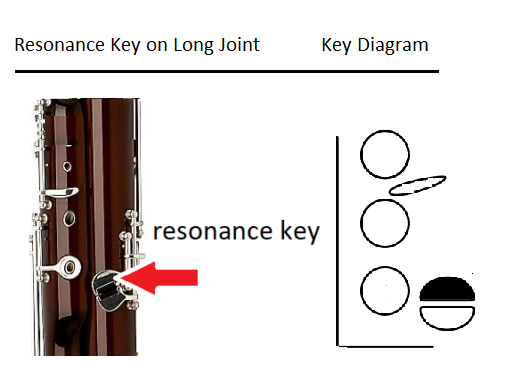
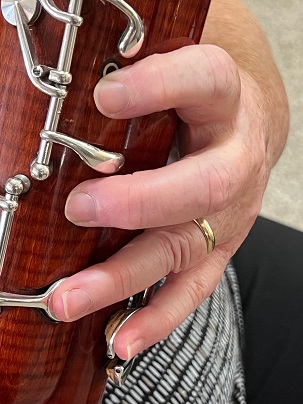
Half-hole “pinky” G
The fingering for top space G is very close to the fingering for low G but top space G requires half-hole and the resonance key.
Note: You might need to open a little more or a little less of the E tone-hole to get each half-hole note to speak clearly.
- If the G growls (too much lower octave), OPEN MORE of the E tone hole.
- If the G squeaks or sounds airy, OPEN LESS of the E tone hole.
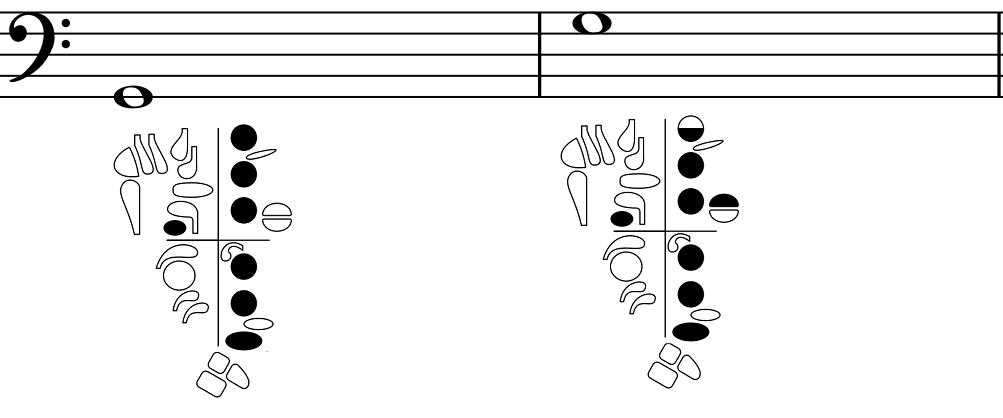
Matching Pitch
Half-hole pinky G can be tricky to tune. Play this exercise with an octave drone on G.
If you are flat to the drone:
- Make sure you listen carefully to the drone before playing.
- Blow a full, faster stream of air.
If you are sharp to the drone:
- Use the resonance key (top key for left pinky).
- Lower the back of your tongue by voicing an “ahh” vowel (like the word “hot).
- Keep space between your teeth and in your oral cavity (hot pizza mouth).
- Keep the whisper key engaged with your left thumb.

G Octaves
The next two exercises include visual reminders:
![]() half-hole
half-hole
+RES add resonance key

C major – One Octave
This exercise extends the range of the C major split octave scale by adding half-hole G at the top.
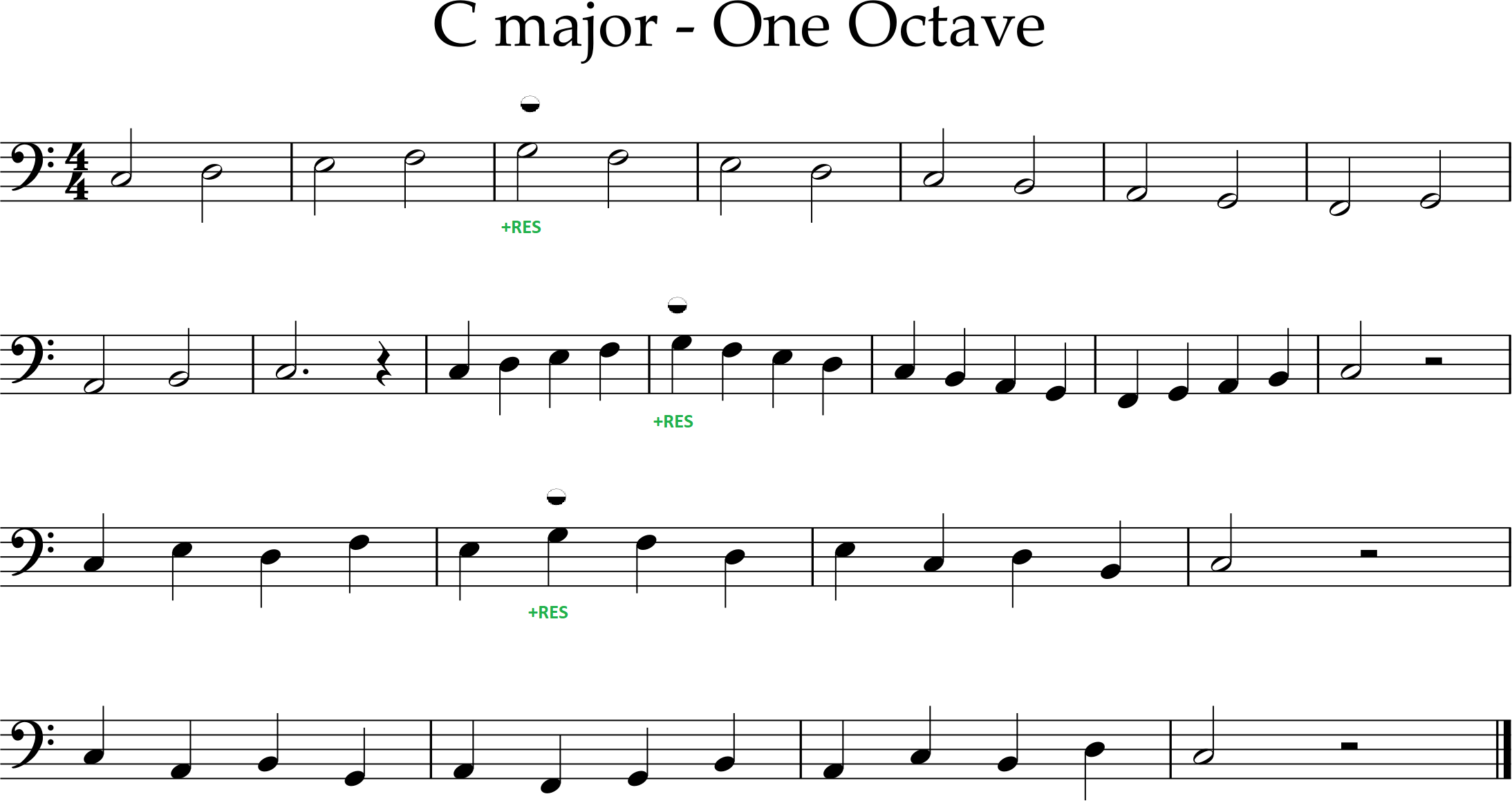
F to Half-hole “pinky” G
The next exercise focuses on playing open F to half-hole pinky G. The left thumb stays on the whisper key for the entire exercise, but all other fingers move.
Reminders:
- Keep your fingers close to the instrument when playing F so you can quickly find the holes to cover for G.
- Keep your fingers relaxed and use a light touch. You don’t need to squeeze to cover the holes if you use the pads of your fingers.
- Add the resonance key (left pinky) on half-hole G so it will have good intonation and sound good.
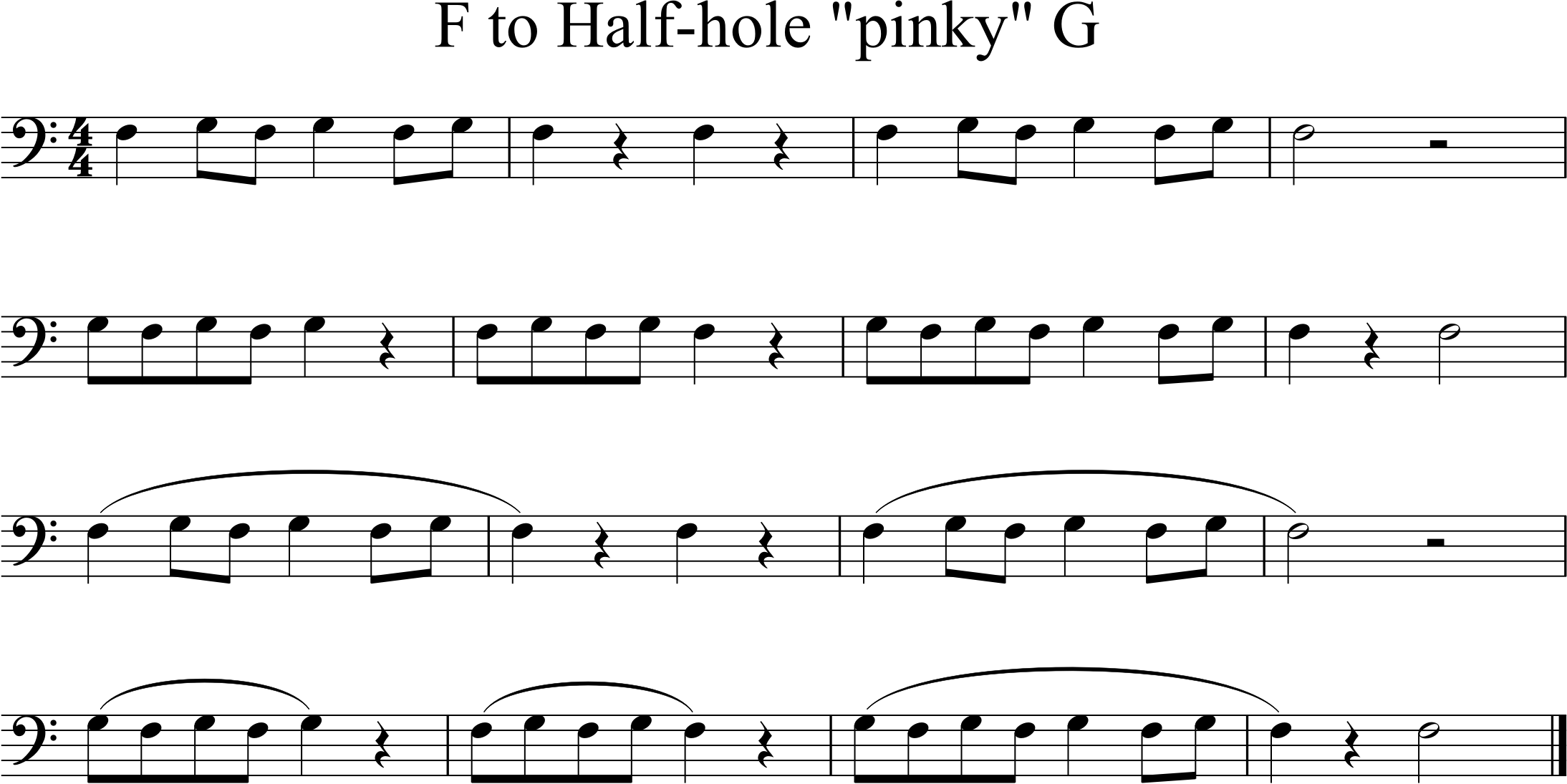
Lightly Row
This tune includes slurs and ties as well as breath marks for phrasing. The breath marks separate the tune into four 4-bar phrases. Slurs indicate a connection between musically grouped notes on different pitches, and ties connect notes of the same pitch.
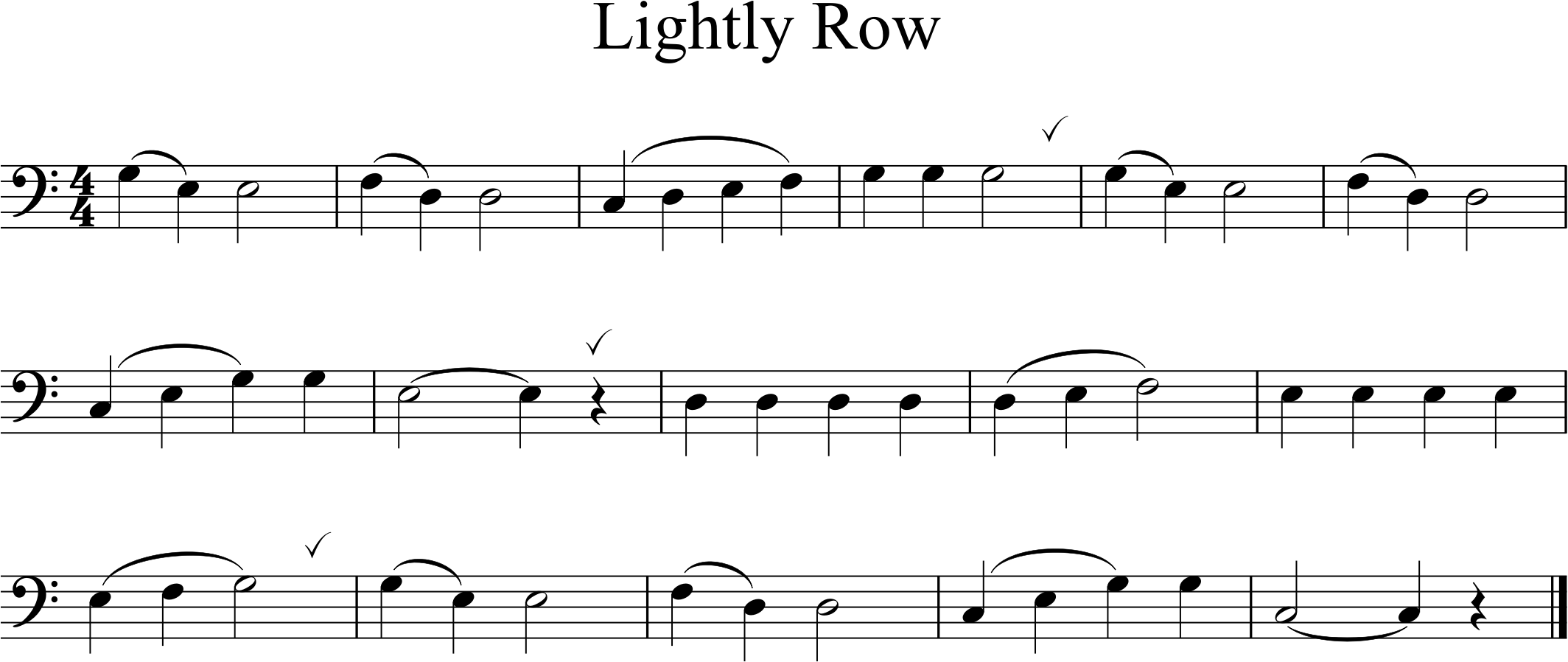
Intervals for Practice #1 – Half-hole G
Below is one more exercise working on half-hole pinky G and its neighboring notes.

Grandfather’s Clock
This tune introduces the use of repeat signs, and 1st and 2nd endings.
Repeat signs tell the performer to play the music between the signs two times. Start at the beginning and play the first 8 bars, the play the music marked as the 1st ending and go back to the “start repeat” sign. Play through bars 2-8 again and then skip over the 1st ending and play the 2nd ending and continue playing to the end of the piece.
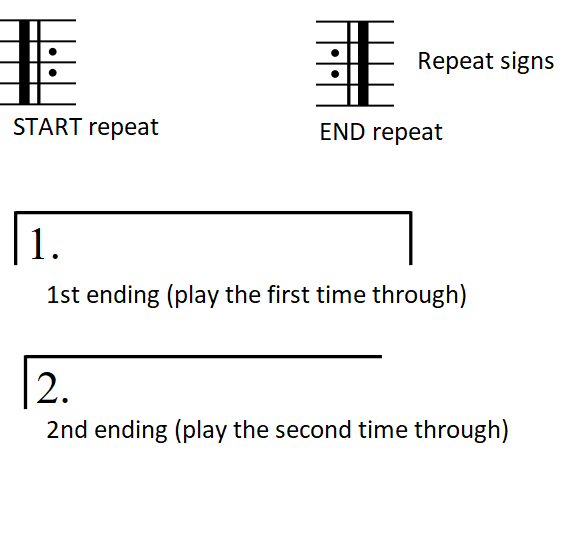
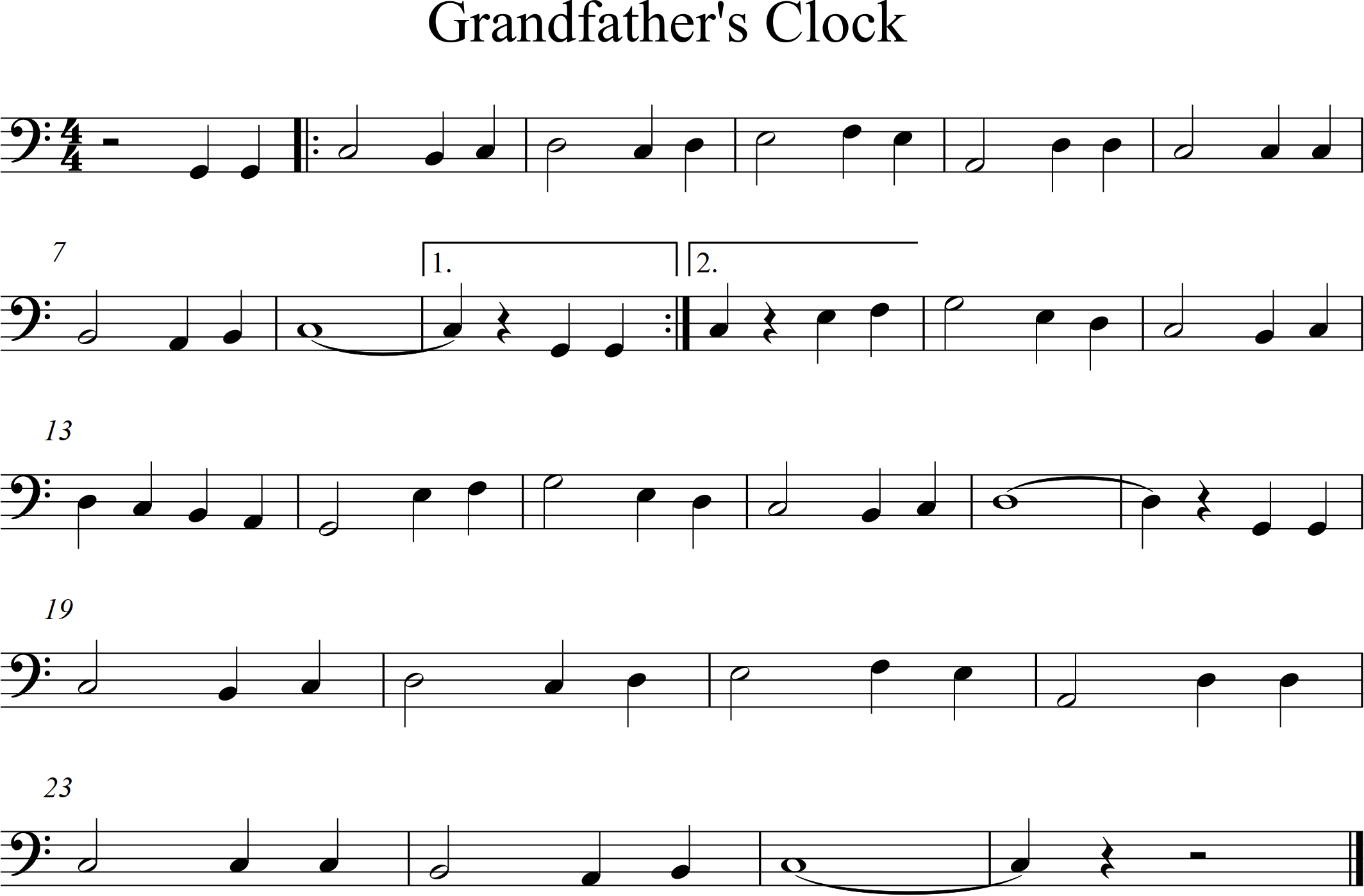
Bicycle Built for Two
Be sure to observe the ties in bars 7-8, 15-16, 19-20, 23-34, and 31-32. Keep counting during the tied notes but do not articulation the second note in the tied pair.
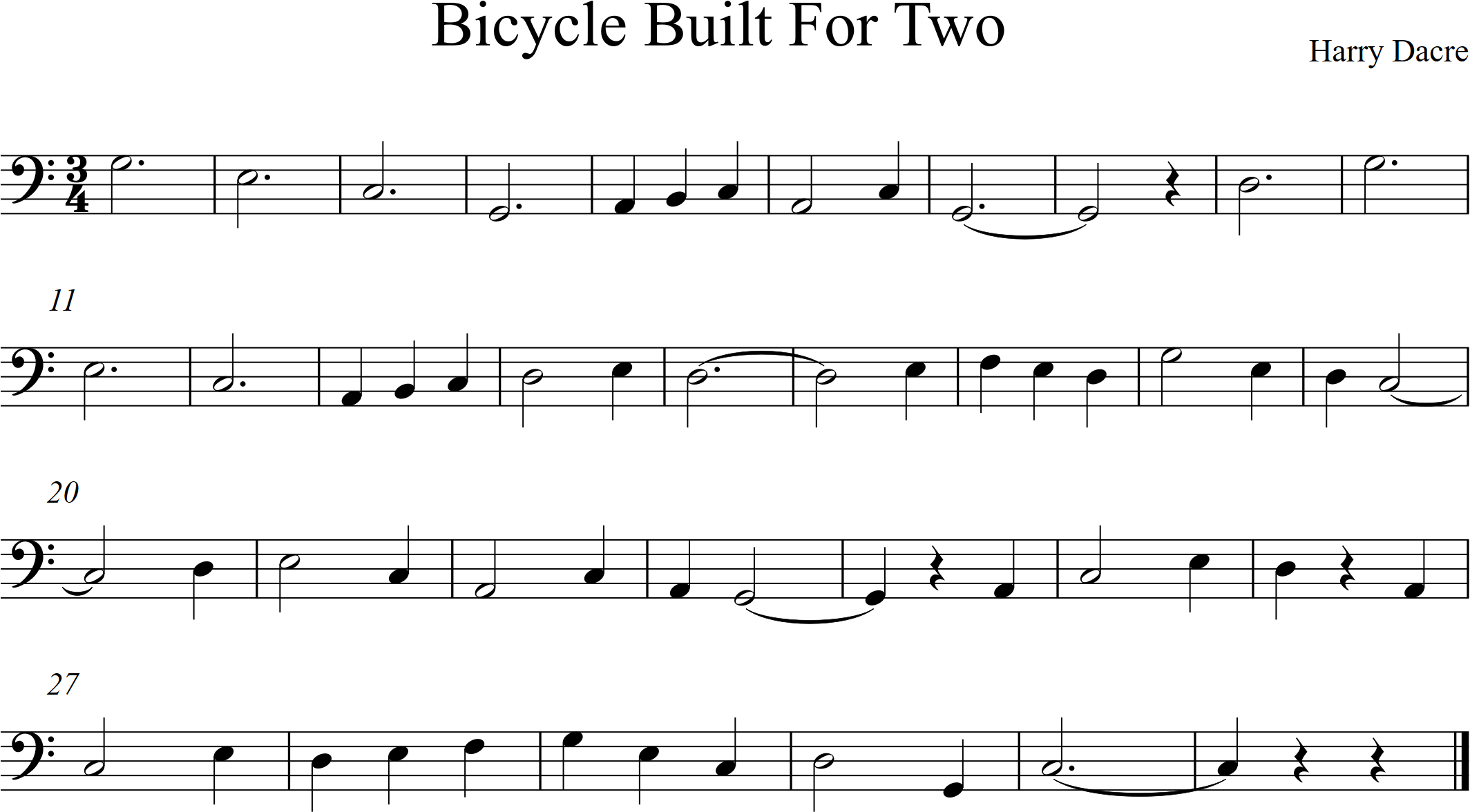
3-note Practice D-Eb-F
The next exercise is a good review of middle Eb and will help you prepare to play the next tune, Panis Angelicus.
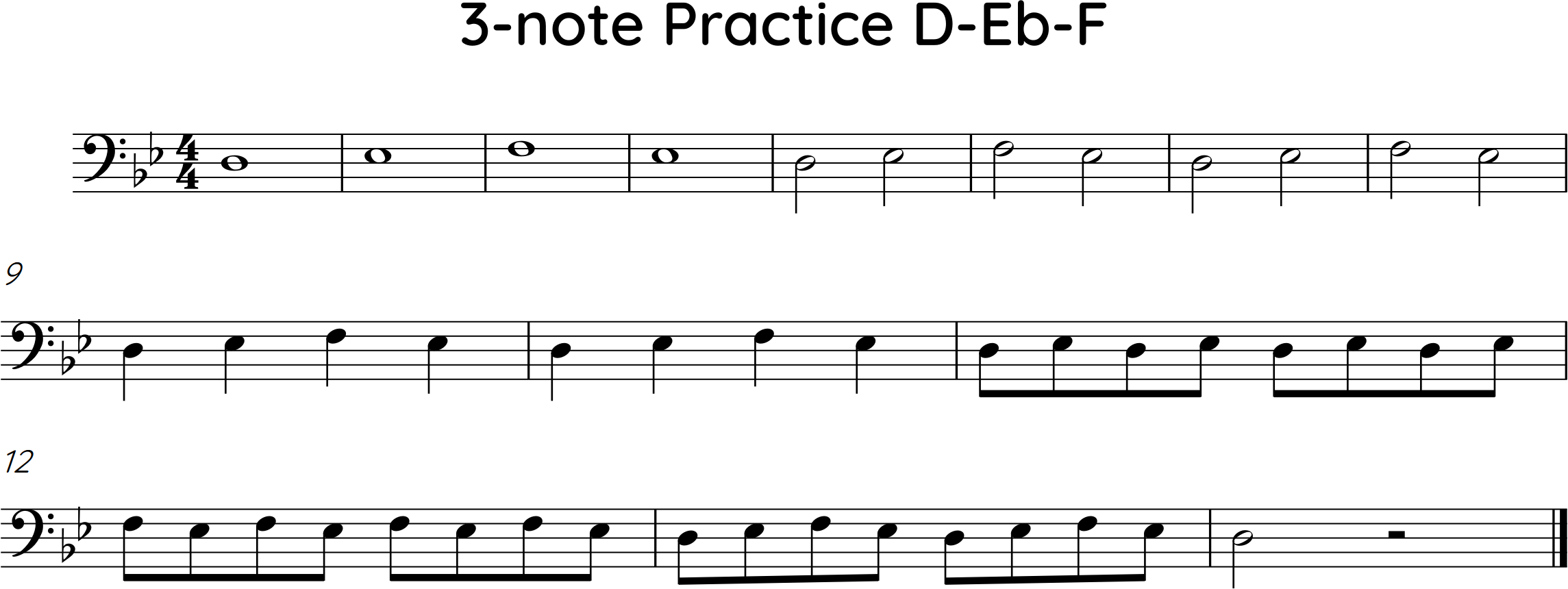
Panis Angelicus
French composer Cesar Franck wrote a beautiful song titled Panis Angelicus (Medici Music Press, arr. Ronald Dishinger)
- NYSSMA Level 2 solo
- Includes middle Eb and half-hole pinky G
- This is a song that has been arranged for bassoon so connect the notes with your air and use a gentle articulation.
- The wide black bar at the beginning is called a multi-rest, and it indicates a rest that lasts for several bars. The number above the bar tells you exactly how many bars to rest. Be sure to count the beats and measures as they happen so you don’t miss your entrance. You need to count to 4 twelve times when you play with the accompaniment.
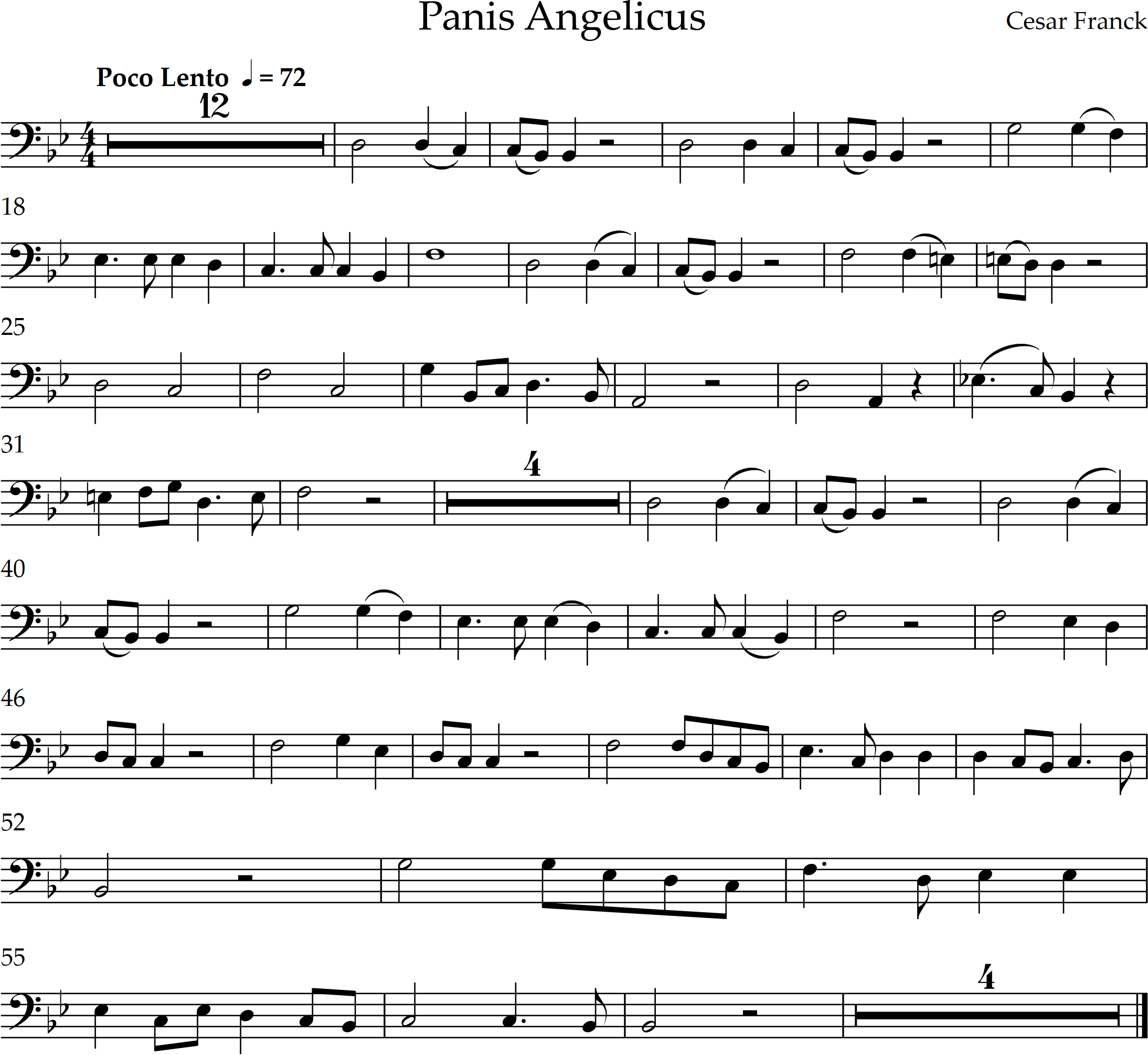

Feedback/Errata